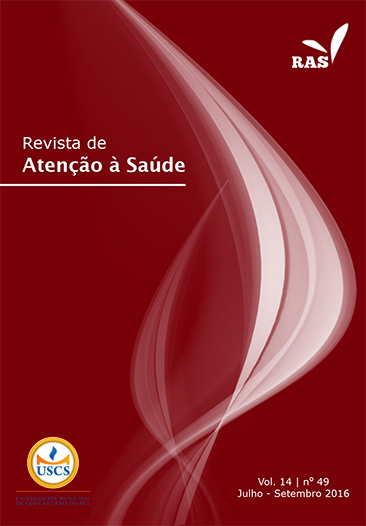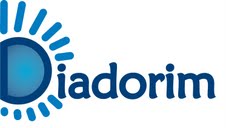Intervention with physical exercise in the family health unit for postmenopausal women
DOI:
https://doi.org/10.13037/ras.vol14n49.3636Keywords:
exercise, pain, quality of life, physical fitness, public healthAbstract
Introduction: The use of physical exercise programs (PEF) in the Family Health Unit (USF) is increasingly common, but little is known about the contribution and the applicability of these programs. Objective: To evaluate the effect of a PEF developed for the conditions available at USF on pain symptoms, quality of life, and functional fitness of postmenopausal women. Methods: The sample consisted of 27 women (45-79 years old), distributed for convenience in exercise group (n=14) and without exercise (n=13). The PEF was conducted in three sessions per week, with 10 minutes of warming up, 20 minutes of located exercises, and 50 minutes of aerobic exercises (55-65% VO2max) over 12 weeks. Results: Exercise group showed significant improvement in the quality of life, but without significant interaction (p=0.104). For functional fitness, it was observed significant effect (p=0.007) of PEF only for aerobic endurance. The exercise group had reductions in pain symptoms in the neck/chest area (21.4% to 7.1%) and in the region of the lower limbs (61.5% to 50%). Conclusion: Regarding the quality of life, it is understood that many factors can influence this variable, so the results seen here do not allow excluding the possible influence of exercise on this indicator. The significant improvement in functional fitness only in aerobic endurance is mainly due to the longer time destined for aerobic activities, and the time devoted to other aspects of functional fitness is insufficient for observing significant improvements. The reduction of pain symptoms, although not significant from a statistical point of view, has significant clinical importance.
Downloads
References
Trevisan MC, Souza JMP, Marucci MFN. Influência da proteína de soja e dos exercícios físicos com pesos sobre o gasto energético de repouso de mulheres na pós-menopausa. Rev Assoc Med Bras. 2010;56(5):572-8.
Orsatti FL, Nahas EAP, Nahas-Neto J, Maestá N, Padoani NP, Orsatti, CL. Indicadores antropométricos e doenças crônicas não transmissíveis em mulheres na pós-menopausa da região Sudeste do Brasil. Rev Bras Ginecol Obstet. 2008;30(4):182-9.
Rasia J, Berlezi EM, Bigolin SE, Schneider RH. A relação do sobrepeso e obesidade com desconfortos musculoesqueléticos de mulheres pós-menopausa. Rev Bras Cienc do Envelhec Hum. 2007;4(1):28-8.
Jakobsen MD, Sundstrup E, Brandt M, Jay K, Aagaard P, Andersen LL. Effect of workplace- versus home-based physical exercise on musculoskeletal pain among healthcare workers: a cluster randomized controlled trial. Scand J Work Environ Health. 2015 Mar;41(2):153-63.
Gremeaux V, Gayda M, Lepers R, Sosner P, Juneau M, Nigam A. Exercise and longevity. Maturitas. 2012 Dec;73(4):312-7.
Bonfim MR, Costa JLR, Monteiro HL. Ações de Educação Física na saúde coletiva brasileira: expectativas versus evidências. Rev Bras Ativ Fis Saúde. 2012;17(3):167-73.
Kokobum E, Luciano E, Sibuya CY, Queiroga MR, Ribeiro PAB, Silveira RF, et al. Programa de atividade física em unidades básicas de saúde: relato de experiência no município de Rio Claro-SP. Rev Bras Ativ Fis Saúde. 2007;12(1):45-53.
Taylor D. Physical activity is medicine for older adults. Postgrad Med J. 2014 Jan;90(1059):26-32.
Bassuk SS, Manson JE. Physical activity and health in women. Am J Lifestyle Med. 2014;8(3):144-58.
Barros EN, Alexandre NM. Cross-cultural adaptation of the Nordic musculoskeletal questionnaire. Int Nurs Rev. 2003 Jun;50(2):101-8.
Colpani V, Spritzer PM, Lodi AP, Dorigo GG, Miranda IAS, Hahn LB, et al. Atividade física de mulheres no climatério: comparação entre auto-relato e pedômetro. Rev Saúde Publica. 2014;48(2):258-65.
Ciconelli RM, Ferraz MB, Santos W, Meinão I, Quaresma MR. Tradução para a língua portuguesa e validação do questionário genérico de avaliação da qualidade de vida SF-36 (Brasil SF-36). Rev Bras Reumatol. 1999;39(3):143-50.
Osness WH, Adrian M, Clark B, Hoeger W, Raab D, Wiswell R. Functional fitness assessment for adults over 60 years. Am J Health Educ. 1990;1-24.
Kanellakis S, Kourlaba G, Moschonis G, Vandorou A, Manios Y. Development and validation of two equations estimating body composition for overweight and obese postmenopausal women. Maturitas. 2010 Jan;65(1):64-8.
American College of Sports Medicine. Quantity and quality of exercise for developing and maintaining cardiorespiratory, musculoskeletal, and neuromotor fitness in apparently healthy adults: guidance for prescribing exercise. Med Sci Sports Exerc. 2011 Jul;43(7):1334-59.
Passaro LC, Godoy M. Reabilitação cardiovascular na hipertensão arterial. Rev Soc Cardiol Estado de São Paulo. 1996;6(1):45-58.
Martin CK, Church TS, Thompson AM, Earnest CP, Blair SN. Exercise dose and quality of life: a randomized controlled trial. Arch Intern Med. 2009 Feb;169(3):269-78.
Riesco E, Tessier S, Pérusse F, Turgeon S, Tremblay, Weisnagel J, et al. Impact of walking on eating behaviors and quality of life of premenopausal and early postmenopausal obese women. Menopause. 2010;17(3):529-38.
Guimarães ACA, Baptista F. Atividade física habitual e qualidade de vida em mulheres de meia idade. Rev Bras Med Esporte. 2011;17(5):305-9.
Earnest CP, Blair SN, Church TS. Age attenuated response to aerobic conditioning and postmenopausal women. Eur J Appl Physiol. 2010 Sep;110(1):75-82.
Campbell PT, Gross MD, Potter JD, Schmitz KH, Duggan C, McTiernan A, et al. Effect of exercise on oxidative stress: a 12-month randomized controlled Trial. Med Sci Sports Exerc. 2010 Aug;42(8):1448-53.
Shephard RJ. Does age attenuate aerobic conditioning response in postmenopausal women? Eur J Appl Physiol. 2011 May;111(5):891-2.
Nakamura Y, Tanaka K, Yabushita N, Sakai T, Shigematsu R. Effects of exercise frequency on functional fitness in older adult woman. Arch Gerontol Geriatr. 2007;44(2):163-73.
Toraman NF, Erman A, Agyar E. Effects of multicomponent training on functional fitness in older adults. J Aging and Phys Act. 2004 Oct;12(4):538-53.
Silva Junior JP, Silva LJ, Ferrari G, Andrade DR, Oliveira LC, Santos M, et al. Estabilidade das variáveis de aptidão física e capacidade funcional de mulheres fisicamente ativas de 50 a 89 anos. Rev Bras Cineantropom Desempenho Hum. 2011;13(1):8-14.
Englund U, Littbrand H, Sondell A, Pettersson U, Bucht G. A 1-year combined weight-bearing training program is beneficial for bone mineral density and neuromuscular function in older women. Osteoporos Int. 2005 Sep;16(9):1117-23.
Ellingson LD, Colbert LH, Cook DB. Physical activity is related to pain sensitivity in healthy women. Med Sci Sports Exerc. 2012 Jul;44(7):1401-6.
Angin E, Erden Z. The effect of group exercise on postmenopausal osteoporosis and osteopenia. Acta Orthop Traumatol Turc. 2009;43(4):343-50.
Landmark T, Romundstad P, Borchgrevink PC, Kaasa S, Dale O. Associations between recreational exercise and chronic pain in the general population: evidence from the HUNT 3 study. Pain. 2011 Oct;152(10):2241-47.
Søgaard K, Blangsted AK, Nielsen PK, Hansen L, Andersen LL, Vedsted P, et al. Changed activation, oxygenation, and pain response of chronically painful muscles to repetitive work after training interventions: a randomized controlled trial. Eur J Appl Physiol. 2012 Jan;112(1):173-81.
Downloads
Published
Issue
Section
License
Policy Proposal for Journals offering Free Delayed Access
Authors who publish in this magazine agree to the following terms:
- Authors maintain the copyright and grant the journal the right to the first publication, with the work simultaneously licensed under a Creative Commons Attribution License after publication, allowing the sharing of the work with recognition of the authorship of the work and initial publication in this journal.
- Authors are authorized to assume additional contracts separately, for non-exclusive distribution of the version of the work published in this magazine (eg, publishing in institutional repository or as a book chapter), with the acknowledgment of the authorship and initial publication in this journal.
- Authors are allowed and encouraged to publish and distribute their work online (eg in institutional repositories or on their personal page) at any point before or during the editorial process, as this can generate productive changes, as well as increase impact and citation of the published work (See The Effect of Open Access).









